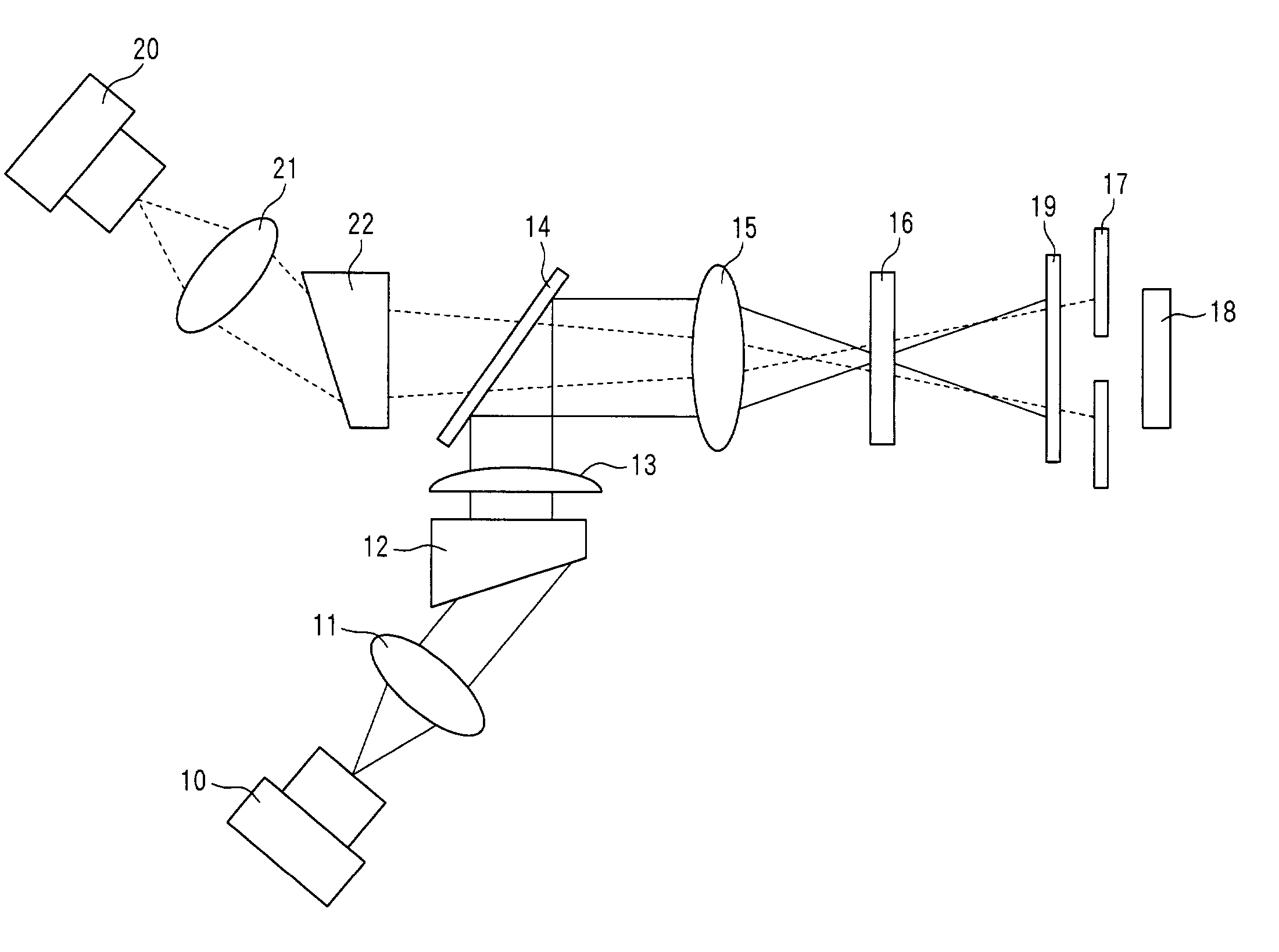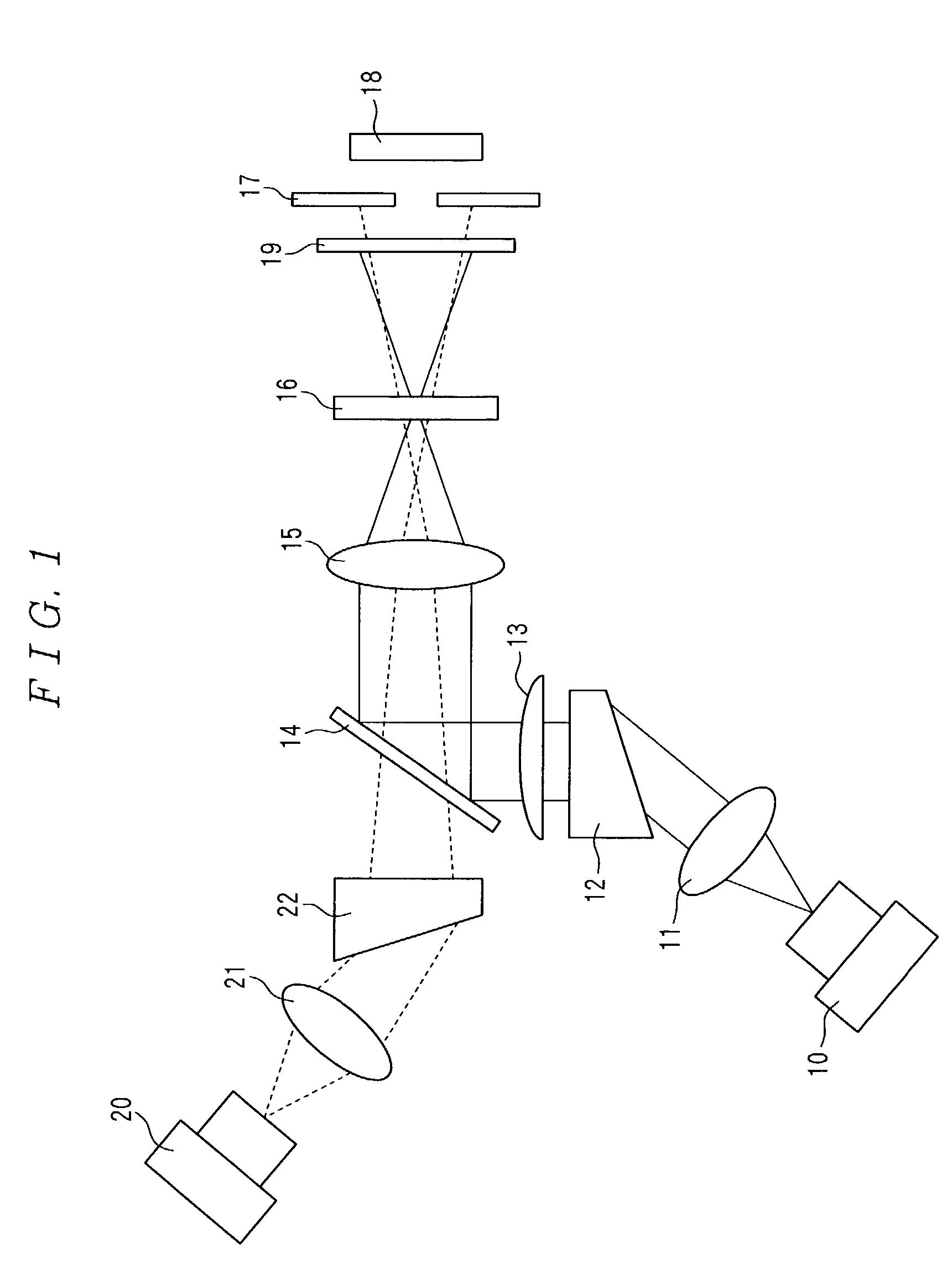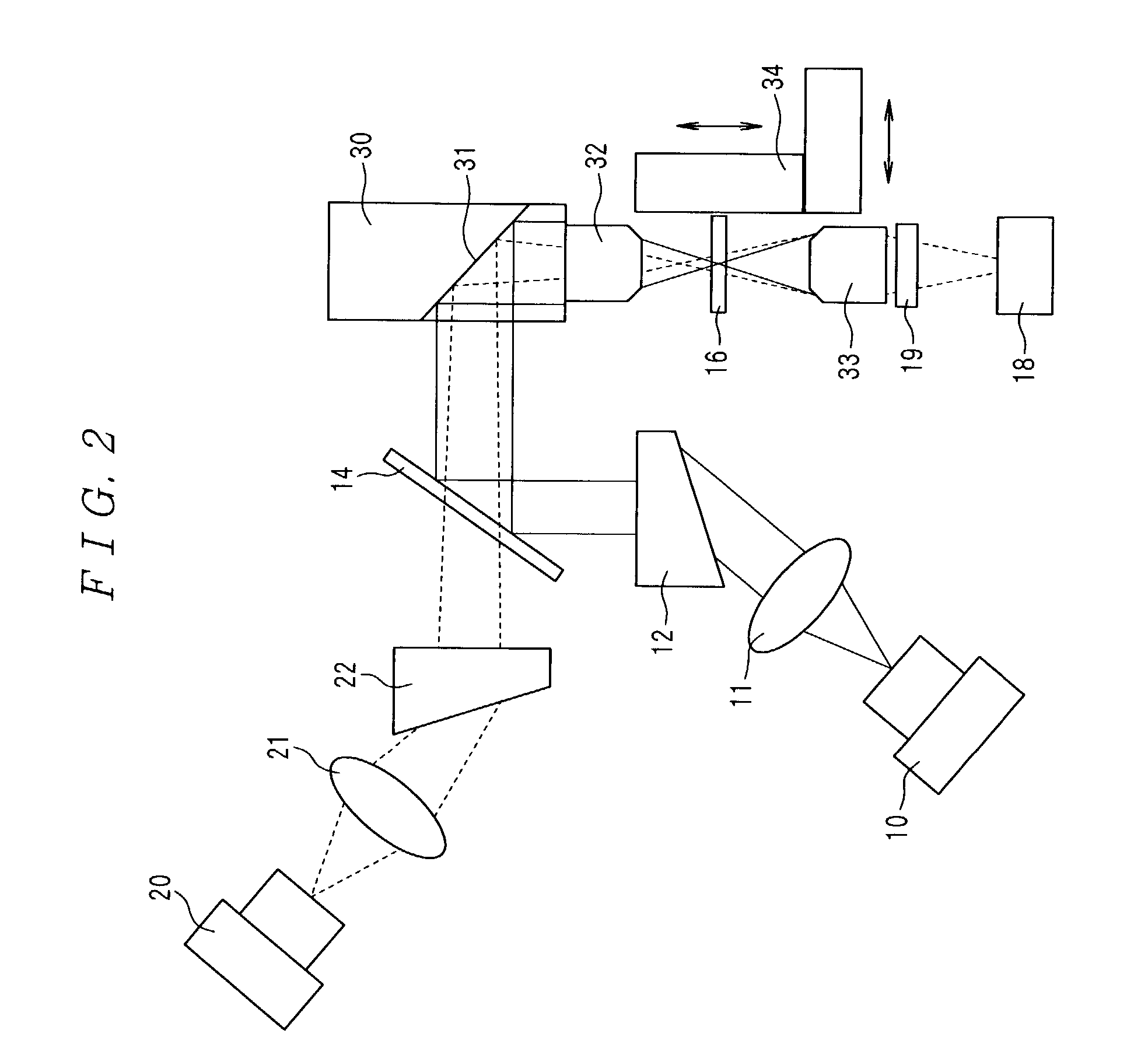Photothermal transducing spectroscopic analyzer
a spectroscopic analyzer and photothermal technology, applied in the direction of spectrometry/spectrophotometry/monochromators, instruments, optical radiation measurement, etc., can solve the problems of inability to adapt to the photoinduced fluorescence method, inability to achieve absorption photometry, and large background, etc., to achieve high-precision adjustment of a location
- Summary
- Abstract
- Description
- Claims
- Application Information
AI Technical Summary
Benefits of technology
Problems solved by technology
Method used
Image
Examples
example 1
[0159]An example where optics are separately fixed on an optical bench, a microscope is used, and both the light sources of excitation light and probe light are made of semiconductor laser beam-emitting apparatuses will be described in detail.
[0160]FIG. 2 is a structural diagram explaining a construction of a photothermal spectroscopic analyzer used in this example. In addition, since the construction of a photothermal spectroscopic analyzer in FIG. 2 is almost the same as the construction of the photothermal spectroscopic analyzer in FIG. 1, only different portions will be described and the explanation of the same portions will be omitted. In addition, in FIG. 2, the same symbols in FIG. 1 are assigned to the portions identical or equivalent to those in FIG. 1.
[0161]A semiconductor laser beam-emitting apparatus with the wavelength of 635 nm and a rated output of 20 mW (DL-4038-025 made by SANYO Electric Co., Ltd.) was used for a light source 10 of excitation light. A constant curre...
example 2
[0187]An example of which miniaturizing and integrating a portion from a light source to detection means will be described in detail with referring to FIG. 5. In addition, in FIG. 5, the same symbols in FIG. 1 are assigned to the portions identical or equivalent to those in FIG. 1. In addition, in this example, although several kinds of our own optics are used, it is natural to use commercial optics so long as they have the same characteristics.
[0188]A semiconductor laser beam-emitting apparatus with the wavelength of 635 nm and a rated output of 30 mW (LTO51PS, made by Sharp Corporation) was used for a light source 10 of excitation light. In addition, a semiconductor laser beam-emitting apparatus with the wavelength of 780 nm and a rated output of 50 mW (ML60114R, made by Mitsubishi Electric Corporation) was used for the light source 20 of probe light. These semiconductor lasers were made to enable output control and current control by commercial LD drivers (ALP-6323CA, made by Asa...
PUM
| Property | Measurement | Unit |
|---|---|---|
| diameter | aaaaa | aaaaa |
| diameter | aaaaa | aaaaa |
| wavelength | aaaaa | aaaaa |
Abstract
Description
Claims
Application Information
 Login to View More
Login to View More - R&D
- Intellectual Property
- Life Sciences
- Materials
- Tech Scout
- Unparalleled Data Quality
- Higher Quality Content
- 60% Fewer Hallucinations
Browse by: Latest US Patents, China's latest patents, Technical Efficacy Thesaurus, Application Domain, Technology Topic, Popular Technical Reports.
© 2025 PatSnap. All rights reserved.Legal|Privacy policy|Modern Slavery Act Transparency Statement|Sitemap|About US| Contact US: help@patsnap.com



